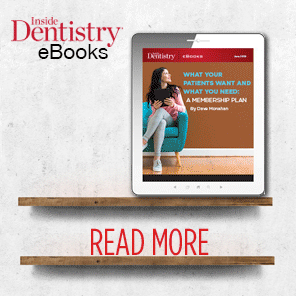/PRNewswire/ -- GOJO Industries, a leader in hand hygiene and skin health and inventors of PURELL® Hand Sanitizer, is working with the World Health Organization (WHO) to raise awareness and enlist hospitals across the globe to register as part of the WHO Save Lives: Clean Your Hands initiative celebrated annually from May 5 – May 7.
GOJO was one of original members to participate in the WHO initiative, Private Organizations for Patient Safety (POPS). POPS allows the WHO and private organizations to collaboratively work towards reducing healthcare acquired infections (HAIs) by improving hand hygiene education and awareness. HAIs complicate between 5 and 10 percent of admissions in acute care hospitals in industrialized countries and in developing countries, the risk is two to twenty times higher and the proportion of infected patients frequently exceeds 25 percent.1
Major health organizations, including the World Health Organization (WHO) and the Centers for Disease Control and Prevention (CDC) state that handwashing and hand sanitizing with an alcohol-based hand sanitizer are critical in minimizing the spread of germs, especially during times of illness outbreaks. To raise awareness for effective hand hygiene, GOJO is providing nearly 8,300 units of PURELL Advanced Hand Sanitizer and hand hygiene materials to nearly 40 hospitals during the WHO SAVE LIVES: Clean Your Hands campaign from May 5-May 7 and educating hospitals about taking the WHO pledge.
"Once again, the WHO global movement around hand hygiene in healthcare is showing its amazing vitality among national and local hospitals," said Professor Didier Pittet , M.D., director, infection control programme, University of Geneva Hospitals and Faculty of Medicine and Lead Advisor, WHO First Global Patient Safety Challenge: Clean Care is Safer Care . "We have called upon global leaders in the science and distribution of hand hygiene solutions, like GOJO, a member of the Private Organization for Patient Safety (POPS), to help us spread key messages and tools of the WHO multimodal strategy and the 5 Moments of Hand Hygiene to encourage hospitals throughout the world to take the pledge to improve hand hygiene."
"GOJO is committed to participating with the WHO as a member of the POPS initiative to raise hand hygiene awareness and provide education," said Jim Arbogast , Ph.D., vice president of product development at GOJO. "In the future, you will see a greater emphasis on electronic compliance monitoring systems as part of the observation and feedback portion of the multimodal strategy, robust education and new transportable products to assist the healthcare professional in practicing good hand hygiene. The goal is to provide better outcomes with fewer hospital acquired infections."
The WHO First Global Patient Safety Challenge launched in October 20052 aimed at reducing healthcare associated infection worldwide, identified the promotion of hand hygiene practices in healthcare as a priority measure and the entry point to improve infection in Member States.3 In April 2006 the WHO working with more than 100 international experts issued the WHO Guidelines on Hand Hygiene in Healthcare4 with a key element being the concept of, "My five moments for hand hygiene." Today more than 15,500 hospitals from 164 nations worldwide participate in the annual campaign and have taken the "Clean Your Hands Day Pledge."
In addition, GOJO has sponsored the Canadian Patient Safety Institute's (CPSI) STOP! Clean Your Hands Program in support of their program to coincide with this global initiative. Canadian Healthcare facilities can get more information at www.handhygiene.ca and view educational tools and resources to assist in promoting optimal hand hygiene practices. Three lucky registrants will receive a GOJO Hand Hygiene Care package on behalf of CPSI.
PURELL® Advanced Hand Sanitizer has been a critical solution to many hospitals across the world in preventing the spread of infections in healthcare settings. Studies have consistently demonstrated the importance of using PURELL Instant Hand Sanitizer in healthcare settings where infection rates in a hospital setting were reduced by 36% reduction in a hospital setting5 and 30% reduction in long-term care facilities.6 In January 2012, a new formulation, PURELL Advanced Hand Sanitizer was launched and became the only alcohol-based hand sanitizer to exceed the U.S. FDA germ kill requirements in one pump.7
To learn more about the WHO SAVE LIVES: Clean Your Hands Global Annual Campaign, go to https://www.who.int/gpsc/5may/en/.
About GOJO
GOJO Industries, Inc. (www.gojo.com) is the inventor of PURELL® Advanced Instant Hand Sanitizer, and the leading global producer and marketer of skin health and hygiene solutions for away-from-home settings. The broad GOJO product portfolio includes hand cleaning, handwashing, hand sanitizing and skin care formulas under the GOJO®, PURELL® and PROVON® brand names. GOJO formulations use the latest advances in the science of skin care and sustainability. GOJO is known for state-of-the-art dispensing technology, engineered with attention to design, sustainability and functionality. GOJO programs promote healthy behaviors for hand hygiene, skin care and compliance in critical environments. GOJO is a privately held corporation headquartered in Akron, with offices in the United Kingdom, France, Australia, Japan and Brazil.
1 Pittet D, Allegranzi, B, Storr, S, Bagheri N, Dziekan G, Leotsako A, Donaldson, L. Infection control as a major World Health Organization priority for developing countries. Journal of Hospital Infection. 2008, 68: 285-292.
2 Pittet D, Donaldson, L. Clean Care is Safer Care : a worldwide priority. Lancet 2005; 366: 1246-1247.
3 Pittet D, Donaldson, L. Clean Care is Safer Care : the first global challenge of the WHO World Alliance for Patient Safety. Infect Control Hosp Epidemiol 2005; 26:891-894.
4 World Health Organization. WHO Guidelines for Hand Hygiene in HealthCare (Advanced Draft). Geneva, Switzerland: World Health Organization, 2006.
5 Am J Infect Control. April 2003 Volume 31, Number 2.
6 Am J Infect Control. June 2002 Volume 30.
7 Macinga, D, Edmonds, S, Campbell, E, Shumaker, D, Arbogast, J. Efficacy of Novel Alcohol-Based Hand Rub Products at Typical In-Use Volumes. Infection Control and Hospital Epidemiology. 2013; 34: 299-301.









